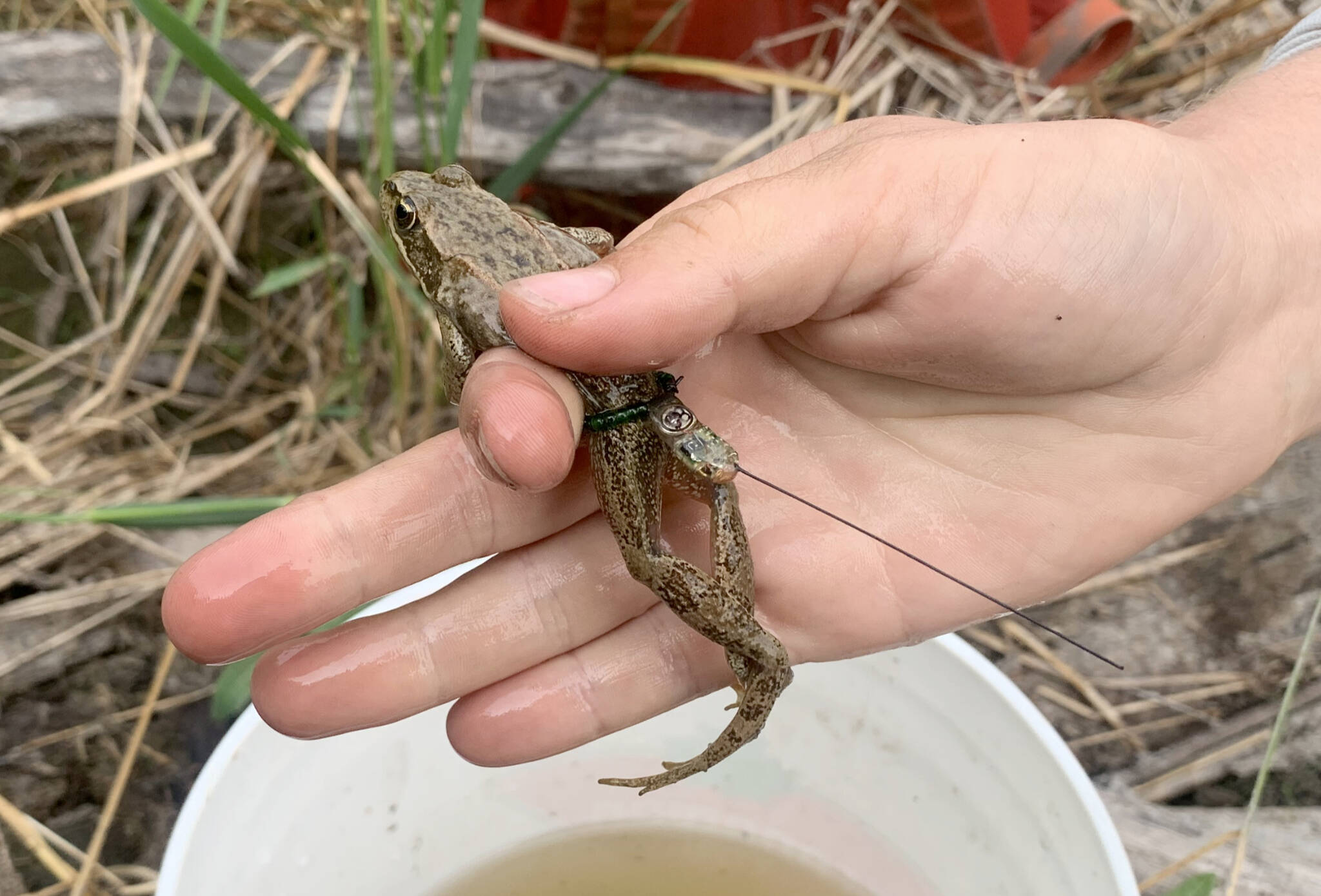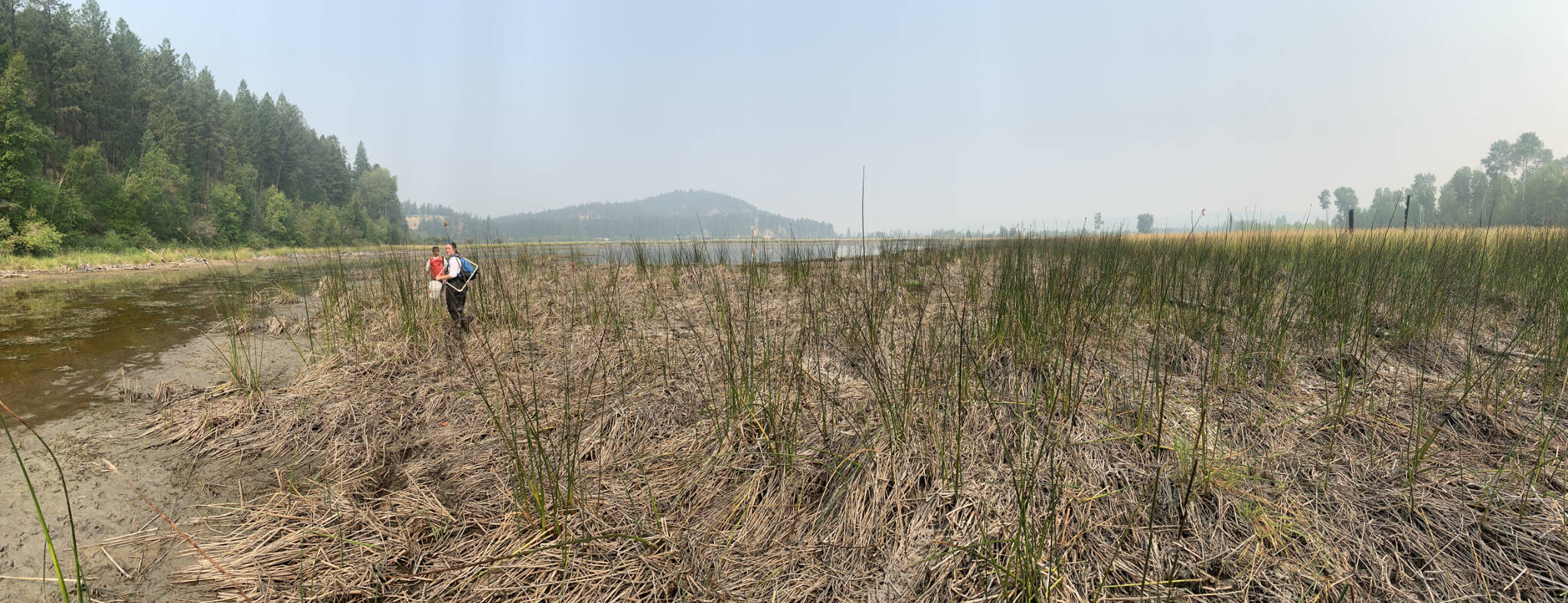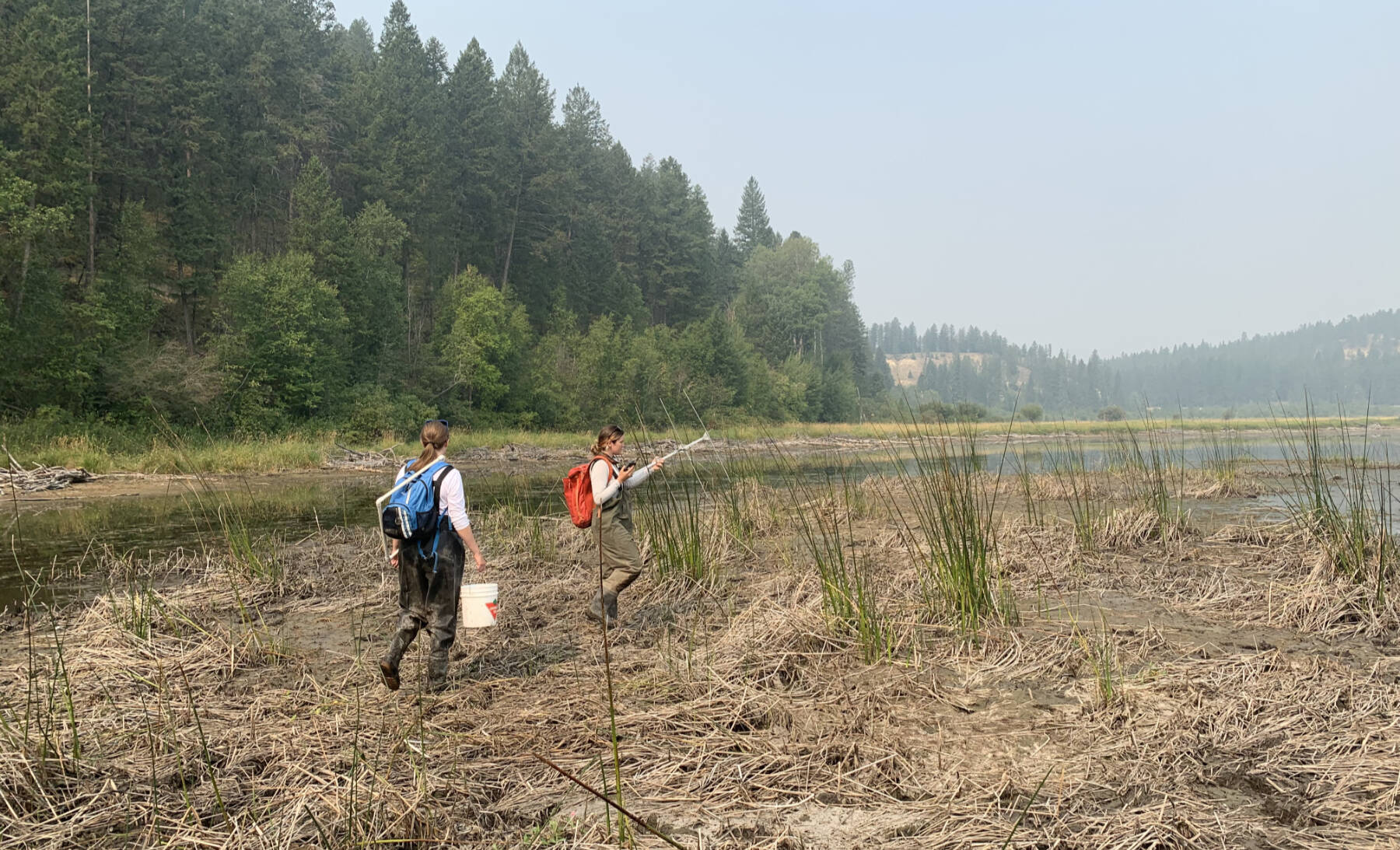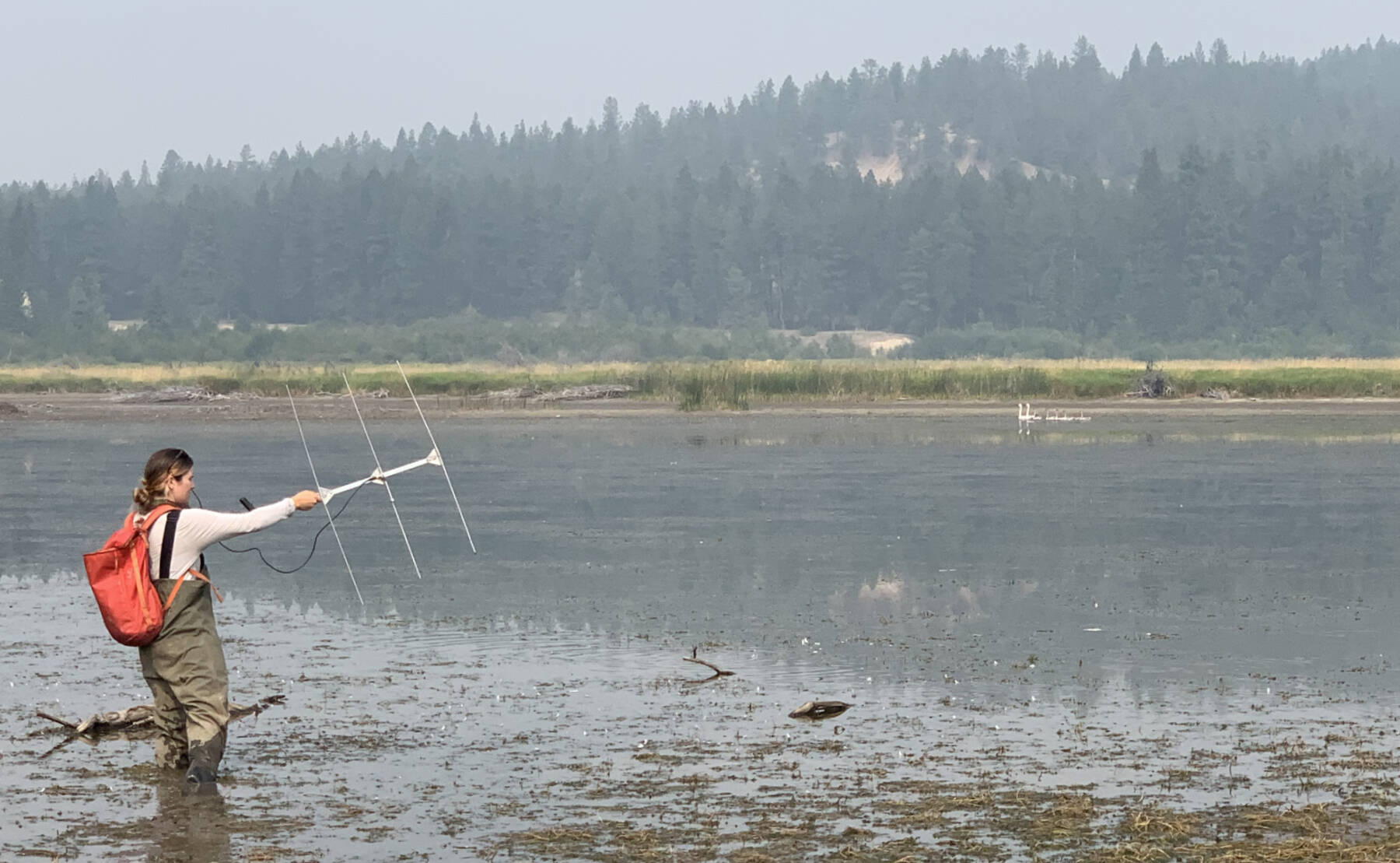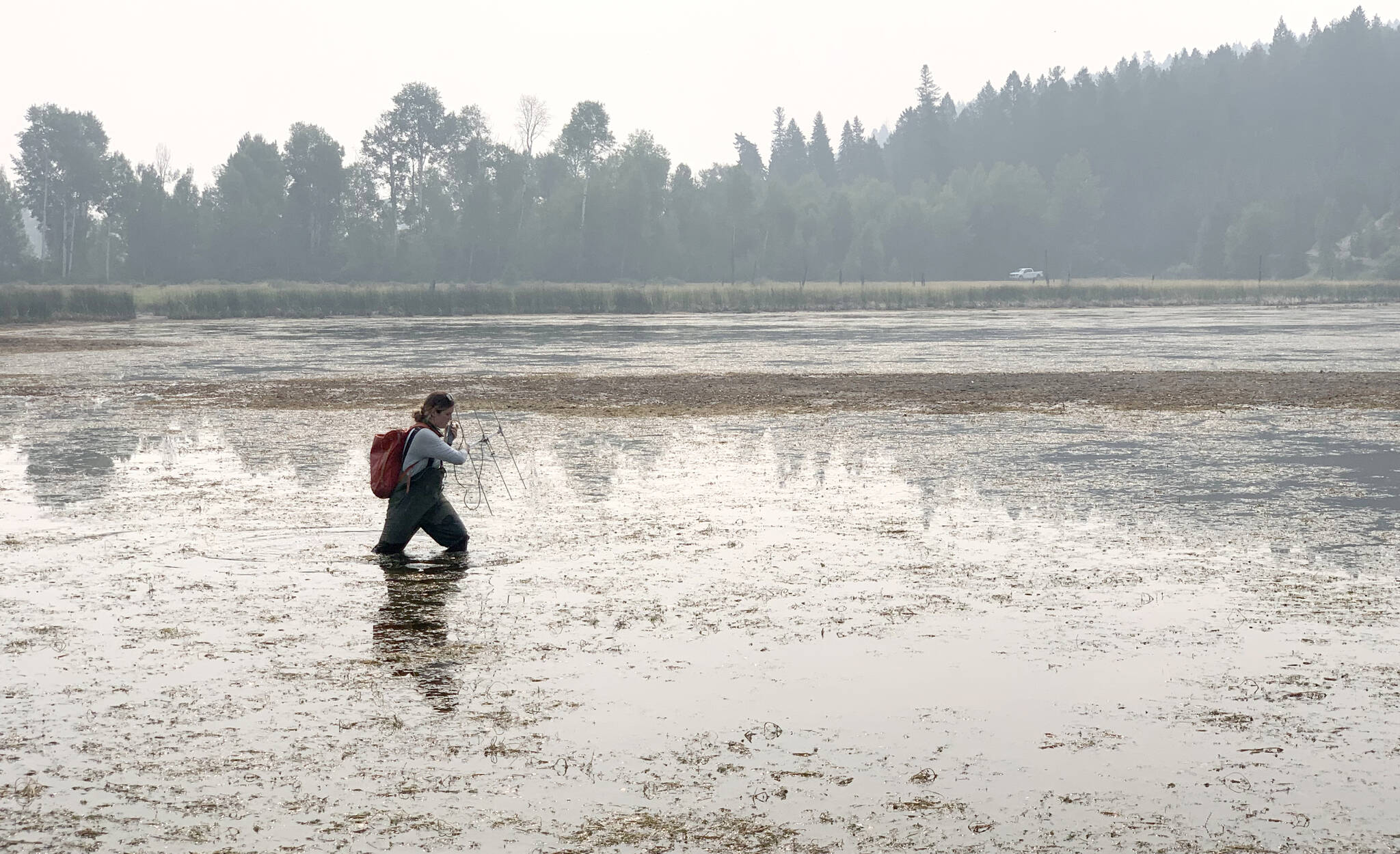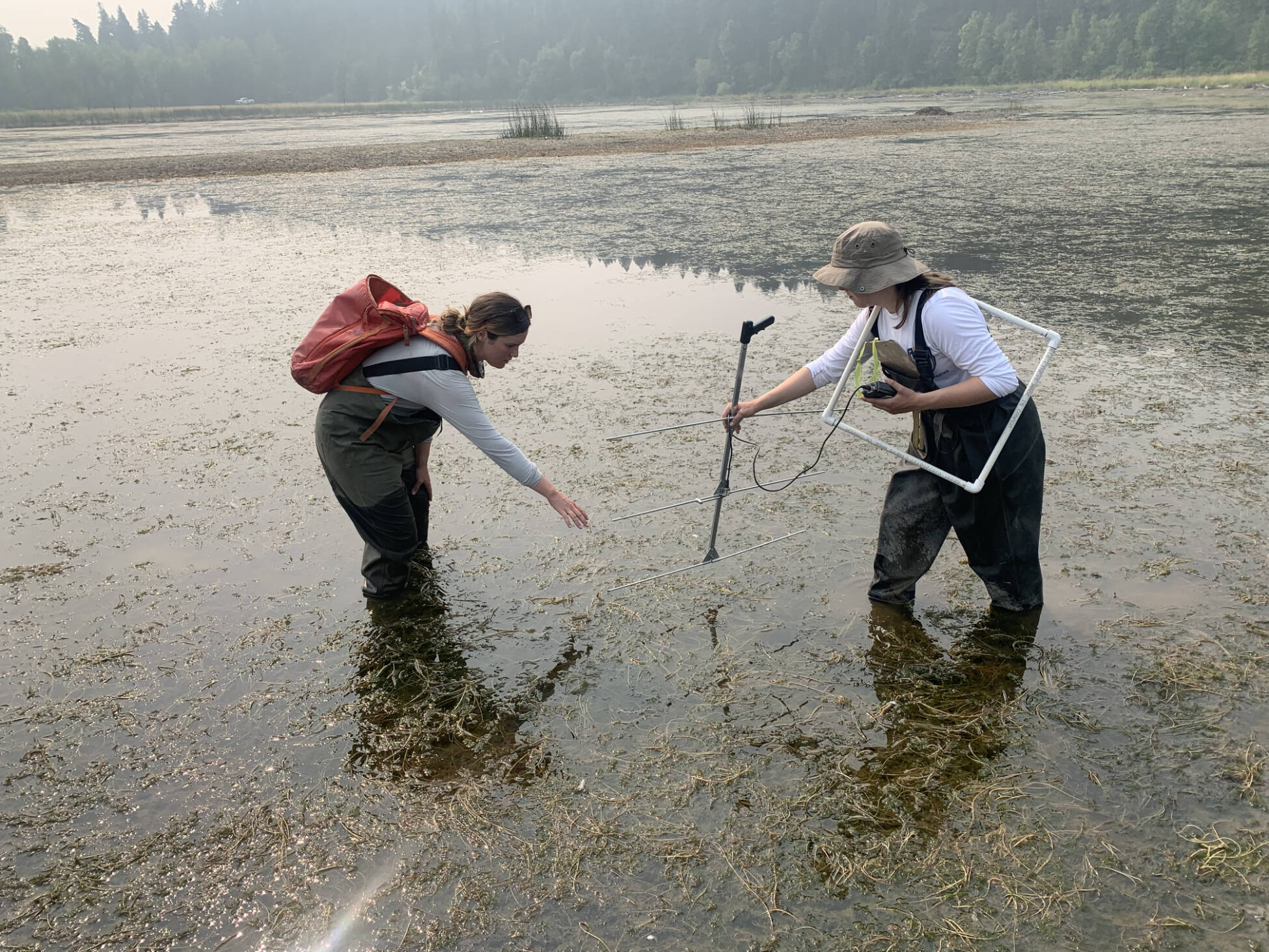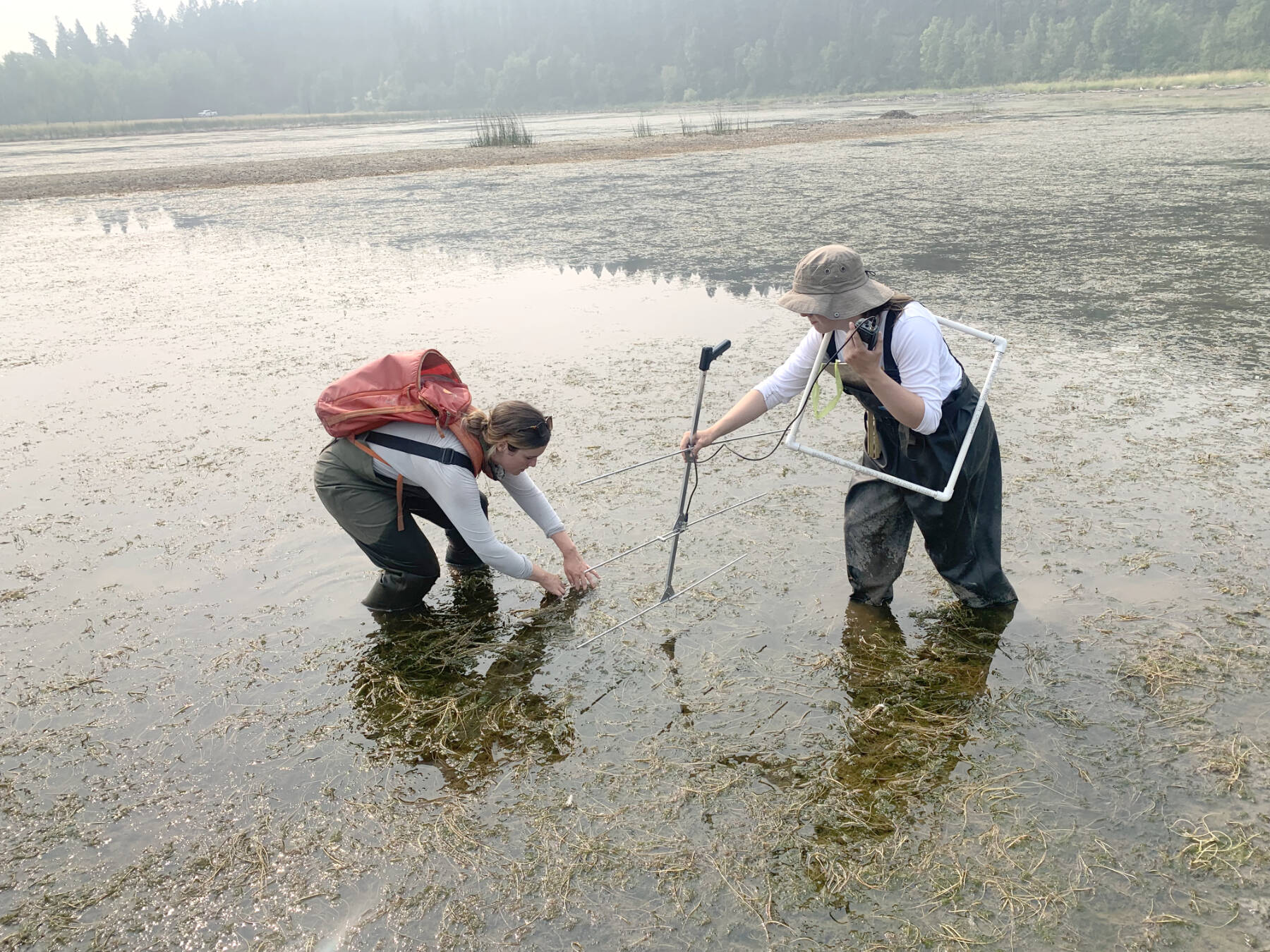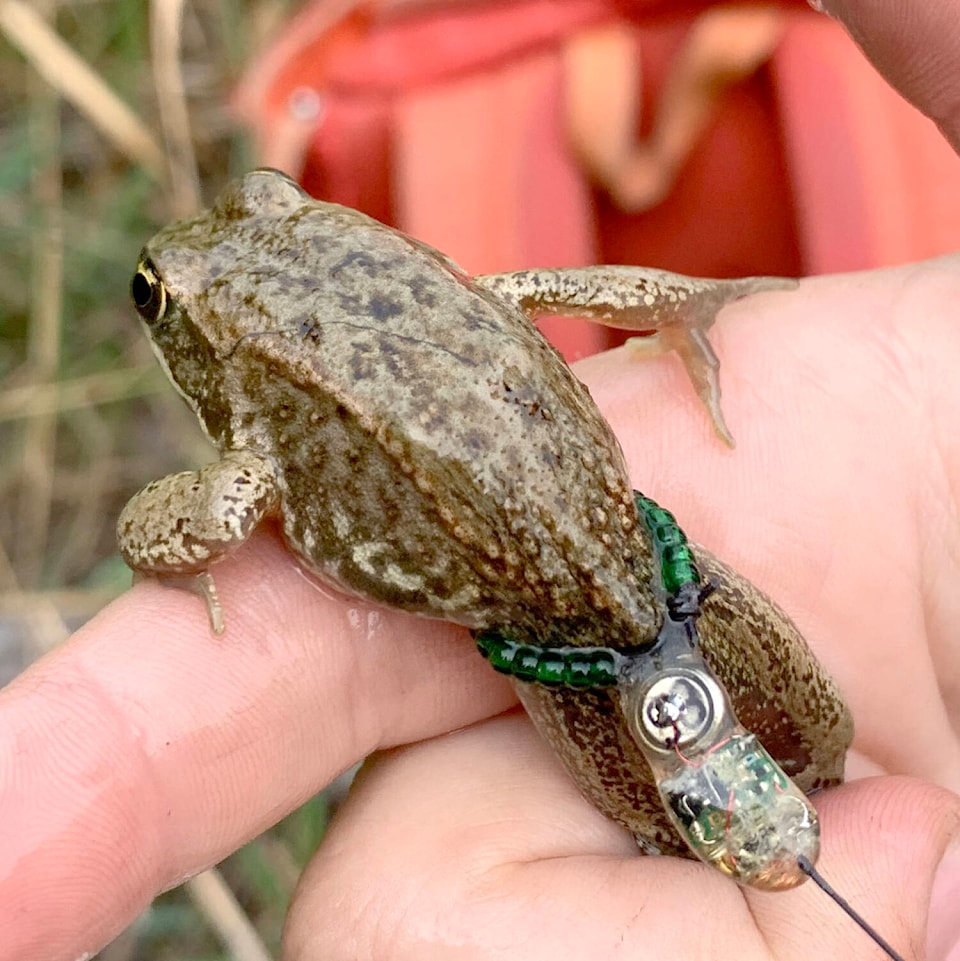Out at the Mayook Marsh, 20 kilometres from Cranbrook, Megan Winand and Darah Clarke are sweeping the marsh with a large hand-held radio antenna, looking for Shrek.
Shrek is one of the several dozen frogs, that have been captured, fitted with a tiny radio transmitter belt, then re-released. Winand and her research assistant Clarke, are now finding these frogs again, to see how they’ve responded to this “mitigation translocation.”
Mitigation translocation — colloquially called “salvage” in British Columbia, is a common amphibian conservation practice, used to move animals out of the way of human-caused habitat alteration or destruction — like development or construction projects, for example.
Winand, a Master’s student out of the University of British Columbia, under the supervision of Dr. Tara Martin of the Conservations Decisions Lab, is conducting this two-year project at Mayook Marsh to determine the effectiveness of the practice; how the amphibians take to the relocation — their survival rate and movements since.
“Understanding this research topic is complex,” Winand said. “My research in itself is just the tip of a very large, complex iceberg of a question.”
“This is just the beginning of understanding something we should understand better to ensure it is, in fact, conserving amphibians. But it is research that needs to continue past my project, and hopefully we’ll have more answers in the future.”
The amphibians in question are Columbia Spotted Frogs, several dozen of which have been tagged with a radio belt, and a PIT Tag (Passive Integrated Transponder tag — “think of it as a microchip for your pet,” Winand says). When researchers move a reader over the PIT tag, it gives a unique set of numbers, which lets the researchers identify each individual frog.
Some of the frogs — of the appropriate weight and size — are given a radio transmitter belt, a tiny beaded belt with a little tracker on the end of it that sits on the frogs’ hips.
The species being translocated can then be subject to one of three treatments. The first treatment is the control — wherein the frogs are captured, then moved right back to where they were captured. Or they’re moved a kilometre away. Or they’re moved about five kilometres away.
“With the belt, once the frogs are dropped off wherever it may be — where they were, one kilometre away, or five kilometres away — we can track them to see if they survive the move, and if they do survive, what are they doing after that,” Winand said. “Where they are moving, what habitat are they using along the way. [We’re] just generally trying to understand what happens to the frog once it’s moved.”
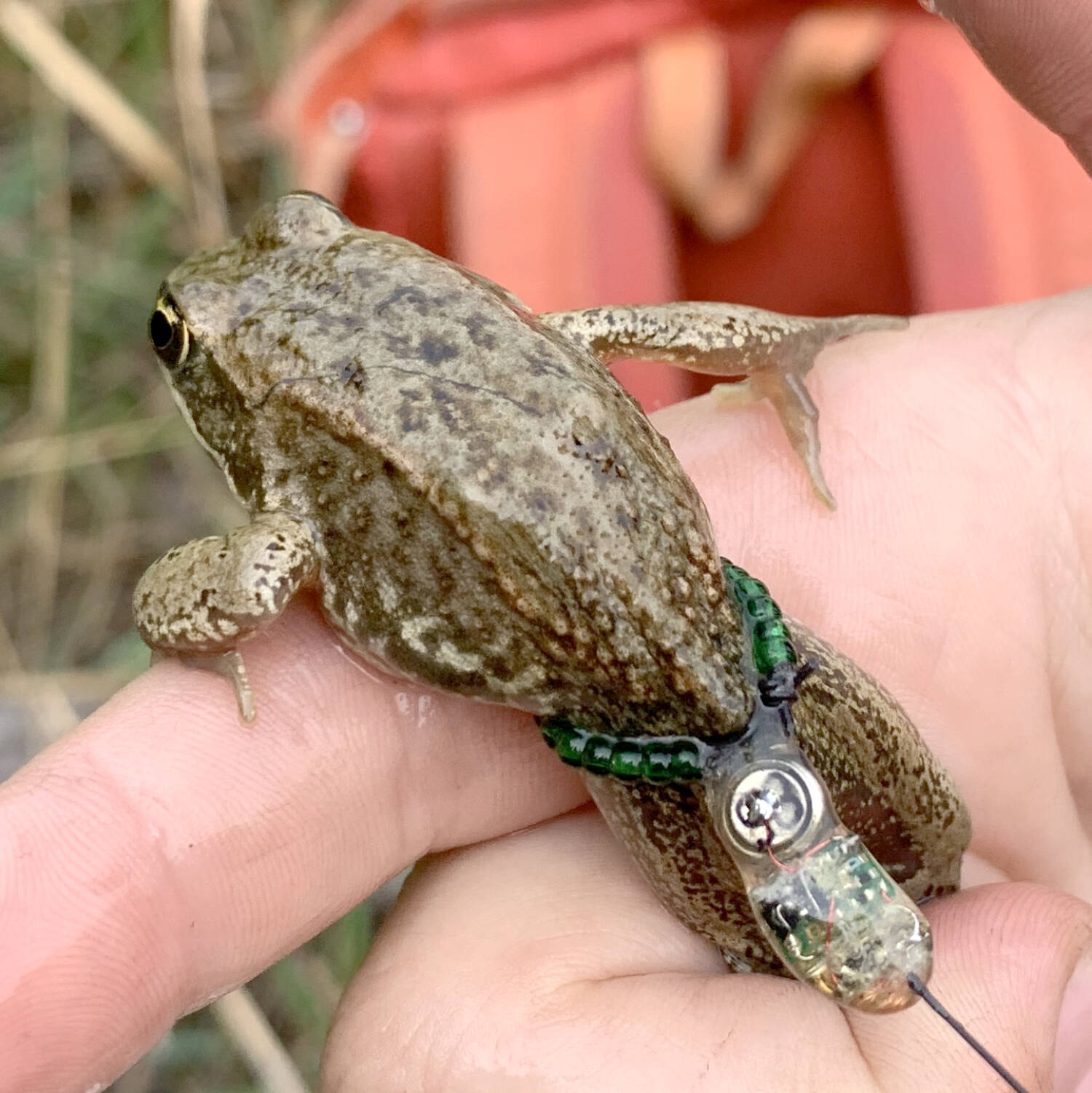
One frog, named Dave, has already been retaken, and is waiting patiently in a water-filled bucket for his measurements to be taken. Winand runs the reader over his PIT tag, then with a calliper measures his shank (the frog’s thigh), and snout-to-vent length. All in order, the tiny beaded belt is removed and the frog is released, to spring forward into the wetland and his future with a mighty leap.
Then it’s off to find the frog Shrek, whose signal is coming in. He’s out there somewhere.
The weather out at the Mayook Marsh is hot and muggy, and wildfire smoke permeates the air. The water levels are very low, because of current drought conditions. But that doesn’t deter the wildlife from coming in to sojourn there. And most of these species — feathered, furred or finned — are looking to feast on frogs. Everybody eats frogs. Herons, swans, muskrats, coyotes, snakes, of course — the frog’s eternal nemesis — are seeking out Winand’s charges, for the purposes of fine dining. The radio trackers have been found in differing piles of scat, and one tracker is even sending out signals from the belly of a snake, huddled underground in a den.
“Frogs are really important to the ecosystem,” Winand said. “A lot of things like to eat them. Just because we’re doing this experiment doesn’t mean the rest of the wetland knows we’re doing it. They’re definitely still playing a vital part of the ecosystem.”
Frogs are an indicator species, and their health is immediately indicative of the health of an ecosystem, and thus the well-being of innumerable species. Most of which rely on frogs as a main food source.
“Another reason why frogs are so important to biodiversity.”
The Columbia Spotted Frog is a common species, and so not listed as threatened provincially or federally.
“There aren’t many species that are not listed anymore,” Winand said. “Biodiversity is definitely low, and a lot of things are facing a lot of threats that they never would have dealt with previously.
“They are still common, and found throughout most of B.C. They’re quite adaptive to different ecosystems. You kind find them lower down the province, close to the Lower Mainland, or up into high mountain alpine environments. They’re quite variable in their ecosystem choices.
“They’re also highly aquatic. Unlike other species of amphibians, like Western toads that spend a lot of time in the forest, these frogs spend most of their time here in the water.”
Winand likes working with the spotted frog for a couple of reasons. “They’re common — I wouldn’t want to be doing experiments like this where I’m not sure of the outcome of the survival of something that’s endangered.” Also, because these frogs are highly aquatic, they’re not going to wander off too far. The researchers don’t have to go prowling around deep in the bush looking for them. “They’re likely going to stick to the edges of the water.”
“It makes it easier for someone like myself, who only has two seasons or two years of field work to collect as much data as possible and make some meaningful analysis from that.”
That said, the frog Shrek is proving to be a crafty one, like his movie ogre namesake. The frog has been on the move, and the researchers wade around the perimeter of the marsh, knee-deep in water, until the tracking antenna locates Shrek and his tracking belt, within a square metre, hidden in two foot deep water under thick mats of marsh plants.
With Clarke holding the antenna, Winand sifts through the water and plants with her hands, at one point getting a gentle hold on Shrek. But Shrek slips away, and the humans begin a habitat survey without a visual. “At least we know he’s still got his belt on,” Winand says.
Globally, mitigation translocation has been done for a long time, but here in B.C. it didn’t become a standard practice until just before the 2010 Olympics.
“Part of the Sea-to-Sky highway had to be re-aligned for the 2010 Whistler Olympic,” Winand said. “That re-alignment was set to go through a number of wetlands that were home to the Northern Red-Legged Frog, a listed species in B.C and Canada. It caused a lot of public uproar.
“People wanted to know what was going to happen to the frogs, and what we were going to do to protect them. And that was when we decided we were going to capture them and move them to equal or better value habitat, near to the original wetlands, which would end up being destroyed.
“That really set the precedent moving forward that this is what we are going to do, and this is how we’re going to conserve amphibians from human-caused habitat alteration or destruction.”
Winand has been intimate with the Mayook Marsh since April, and has come to know it well, and see it as a home for two generations of animals now.
The Mayook Marsh is managed by Ducks Unlimited Canada, one of Winand’s project partners. The other project partner is the Ministry of Water, Land and Resource Stewardship.
Pictured below: The hunt for the frog Shrek, somewhere in the Mayook Marsh. (Barry Coulter photos)
